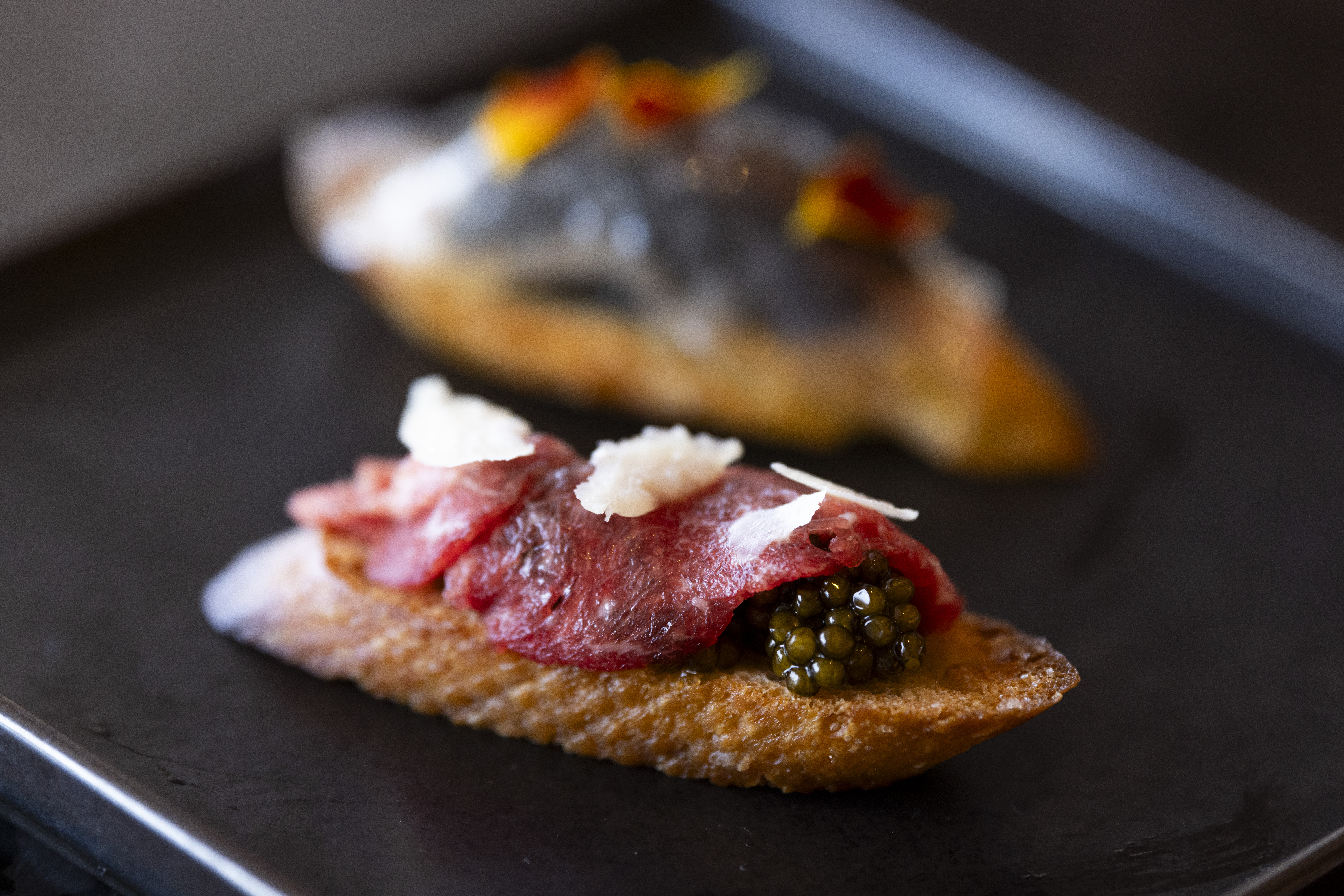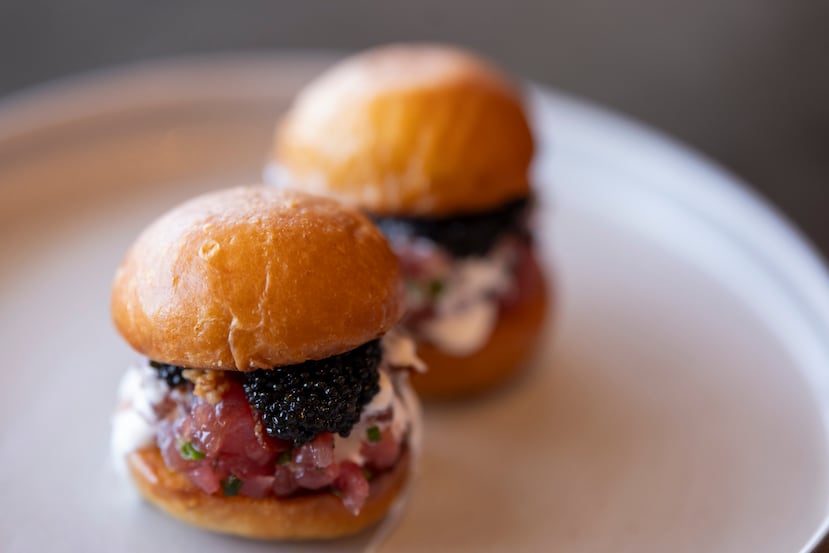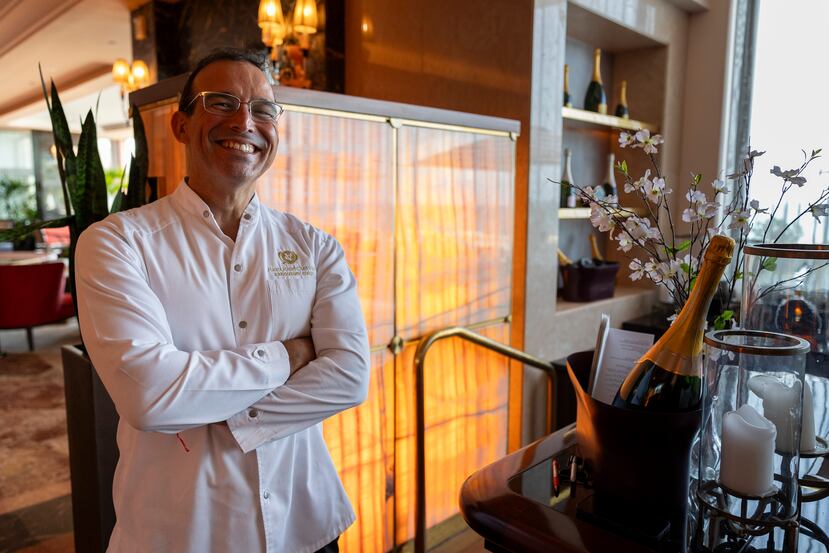For many centuries, just by hearing the word “caviar”, people knew that it was a luxurious and, above all, very expensive food. However, for several decades there has been a change in this perception, as caviar has become more and more accessible to the public due to sustainable aquaculture practices in several countries around the world. In fact, in the United States, every July 18 was named “National Caviar Day” to celebrate this delicacy.
---
Lee este artículo en español.
---
Caviar, a gastronomic treasure revered in the most exclusive circles, has a history as rich as its flavor. Originally from Persia, where sturgeon roe was valued for its supposed medicinal powers, the etymology of the word caviar comes from the Greek ‘avyron’ (egg) or the Persian ‘havia’ which translates as fish roe. The Persians collected the roe in the Kura River, which flows through Turkey, Georgia and Azerbaijan, until it reached the Caspian Sea, although some experts indicate that the tradition of salting it for consumption began in China with the roe of the carp fish.
Over the centuries, caviar has been a delicacy associated with luxury and prestige. Even the Greek scholar Aristotle, in the 4th century B.C., mentioned sturgeon roe in his writings as part of the opulent banquets offered at that time. However, it was in Russia that caviar reached its apogee. The Russian tsars elevated the golden roe of the Sterlet sturgeon to a symbol of exuberance with the finest and most coveted “imperial” caviar. Over time, this delicacy spread throughout Europe and beyond, becoming a status symbol reserved for the elite.

Caviar can be integrated into various dishes to add flavor, such as the Kristal Caviar crostini with beef carpaccio, and Osetra Caviar crostini with Iberian jowl from Marabar by 1919 at the Condado Vanderbilt Hotel.
Changes caused by the shortage
“At the beginning the roe was taken from the sturgeon fish, but it was fished so much that in the 2000s a stop had to be put to the practice of fishing in the Caspian Sea, where it became illegal,” explained Juan José Cuevas, executive chef of Vanderbilt County, who considers himself a caviar aficionado, using it regularly in several of his dishes. “This caused a complete change in the caviar business, as farms began to be created to raise these fish in different countries around the world, as is the case of China and the United States”. Other countries involved in aquaculture include France, Italy, Israel, Bulgaria and Poland, among others.
In fact, the United States diversified its production, promoting local varieties such as lumpfish, hackleback and salmon (whose roe is not considered caviar), which have gained recognition for their quality and accessibility, being substitutes for the traditional sturgeon caviar. This has allowed that, what were once prohibitive and unattainable prices for many, are now more accessible. Of course, there are still brands that are exclusive and have prices beyond the reach of most people.

How to prepare caviar
The preparation of caviar is a meticulous task, requiring patience and care. “There are two ways, being the more traditional one, where the fish is slaughtered, a caesarean section is done and the eggs are extracted. The other way is a manual one, where the fish is kept alive, and where it is given a type of massage and where the eggs come out little by little. Naturally, this takes a long time and requires a lot of labor, so it is not so common,” explained chef Cuevas, who recently opened the Marabar by 1919 champagne and caviar bar at the Condado Vanderbilt hotel, which is part of the 1919 Restaurant.
Once the extraction process occurs, the roe is cleaned, salt-cured with a liquid solution where each company has its own recipe, then rinsed and packaged to preserve its freshness and delicate flavor. According to Cuevas, canned caviar at the right temperature should last two to three months. However, once the can is opened, it should be consumed as soon as possible, since it could start to decompose after a week.
What does caviar taste like?
For many, the flavor offered by caviar could be strong initially, so it could be considered an acquired taste. “Caviar can vary in flavor and intensity, but it is delicate, it has a marine flavor, sometimes hazelnuts and walnuts,” detailed chef Cuevas, who was seduced by caviar when he started working in restaurant cuisine and realizing the versatility that this food can provide along with other ingredients. “Here what will make the difference in flavor will be the species of fish from which the roe comes out, as this will cause them to have a different size, texture and color, among other details”.

For those who have never tried caviar, the chef recommends initially trying it alone, on a spoon, so you get to experience the real taste. “Not everyone is going to love it initially. Maybe they’ll find it a little strong. However, if that person would like to give it a second chance, I would recommend that they try it in a combined dish, where the rest of the flavors can appease the taste a bit,” added Cuevas, who included in Marabar’s menu dishes such as beef tartar, organic egg yolk, caviar, herb salad and roasted vegetable vinaigrette, as well as tuna tartar with sweet peas, pistachios, ginger oil, goat cheese and American caviar, among others.
In fact, this restaurant, which inaugurated the new concept in March of this year, also offers the caviar alone, in a 30-gram package, which is accompanied by an organic egg salad, buckwheat pancakes and sweet potato blinis. In addition to that, monthly, by reservation (Open Table) and with a fixed price, they have champagne and sparkling tastings, along with the variety of caviar served in the restaurant.
“So far, the most that has fascinated the public is that we here are looking for people to understand that caviar is a fun food, that it is not something serious that is eaten ceremoniously and, above all, that it does not necessarily have to be something expensive and that it is inaccessible,” explained Chef Cuevas, who has worked at Vanderbilt County since 2012. “We want people to enjoy the spectacular ocean view we have here, eat well, have a sensational time and want to come back for more.”
---
This content was translated from Spanish to English using artificial intelligence and was reviewed by an editor before being published.


